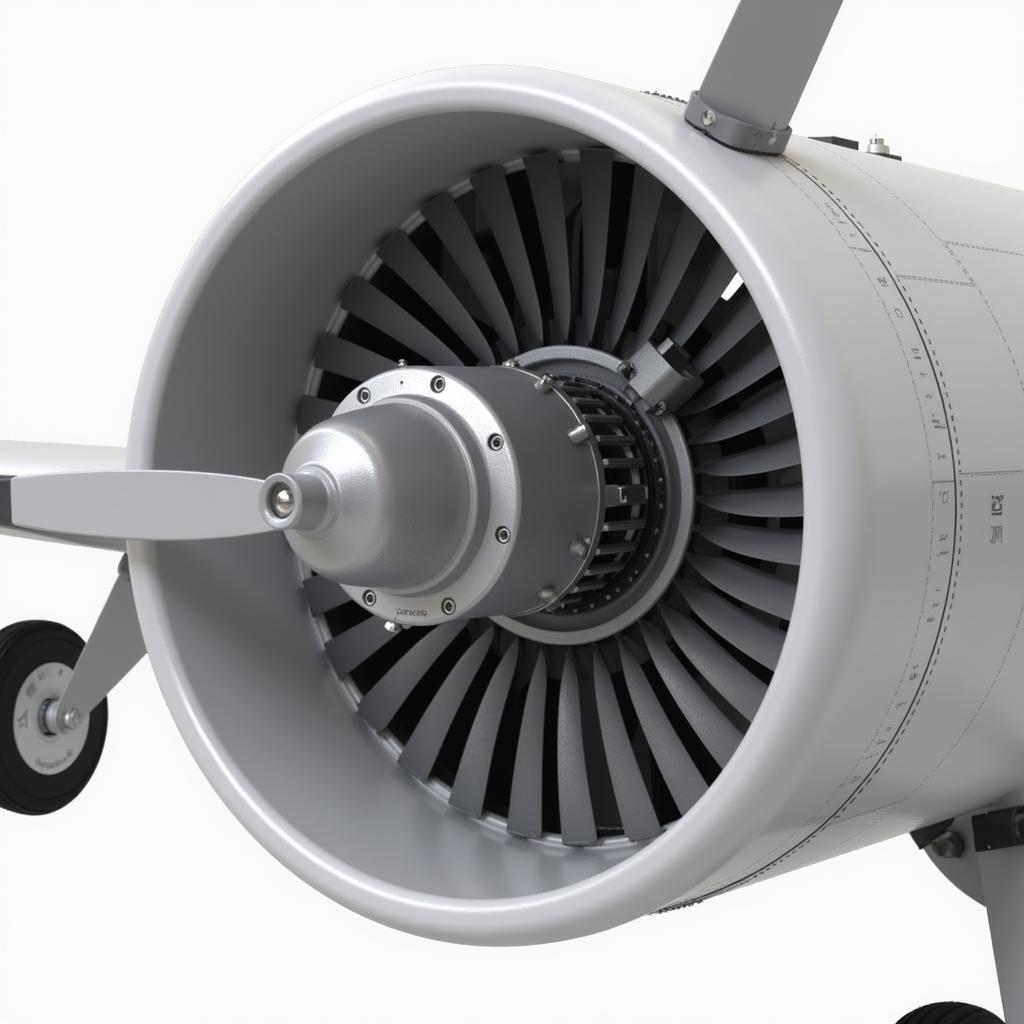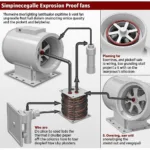Ducted fans have emerged as a key area of interest in the world of light aircraft design, offering a unique blend of efficiency and performance advantages. This article delves into the intricacies of ducted fans, exploring their functionality, benefits, and considerations for implementation in light aircraft.
Understanding the Mechanics of Ducted Fans
A ducted fan, in essence, is a fan enclosed within a cylindrical duct or shroud. This seemingly simple addition significantly impacts the fan’s operational characteristics and delivers notable benefits compared to conventional propellers, especially in the context of light aircraft.
The duct serves to direct the airflow around the fan blades, reducing tip vortices and energy losses. This results in improved propulsive efficiency, particularly at lower speeds, a crucial factor for light aircraft during takeoff and landing.
Advantages of Ducted Fans for Light Aircraft
The utilization of ducted fans in light aircraft offers several compelling advantages:
- Increased Propulsive Efficiency: The shroud’s ability to minimize energy loss translates to a higher proportion of power being converted into thrust, leading to improved fuel efficiency and extended range.
- Enhanced Safety: The enclosed design significantly reduces the risk of foreign object ingestion and minimizes the potential for accidental contact with the rotating blades, enhancing overall safety.
- Reduced Noise Footprint: Ducted fans contribute to a quieter operation by altering the noise signature and directing it in a more controlled manner. This is particularly beneficial for light aircraft operating near populated areas.
- Improved Ground Clearance: The compact nature of ducted fans allows for a higher ground clearance, advantageous for light aircraft operating from unpaved runways or challenging terrains.
Considerations for Ducted Fan Implementation
While ducted fans present compelling advantages, their implementation in light aircraft involves specific considerations:
- Weight and Drag: The addition of the duct introduces additional weight and drag, which must be carefully balanced against the efficiency gains. Optimization of duct design and materials is crucial.
- Complexity and Cost: Ducted fan systems tend to be more complex than conventional propellers, potentially increasing manufacturing and maintenance costs.
- Thrust Variation with Airspeed: The thrust generated by a ducted fan can vary significantly with changes in airspeed. Careful design and control systems are necessary to ensure optimal performance across different flight regimes.
Electric Ducted Fans: A Glimpse into the Future
The emergence of electric propulsion systems has opened new horizons for ducted fans in light aircraft. Electric ducted fans, powered by electric motors, offer several distinct advantages:
- Enhanced Efficiency: Electric motors generally exhibit higher efficiency compared to internal combustion engines, further amplifying the efficiency benefits of ducted fans.
- Reduced Emissions: Electric propulsion systems produce zero direct emissions, aligning with the growing emphasis on sustainable aviation.
- Simplified Design: Electric motors are inherently simpler and more compact than internal combustion engines, potentially leading to more lightweight and efficient ducted fan systems.
 Electric Ducted Fan System for Light Aircraft
Electric Ducted Fan System for Light Aircraft
Conclusion
Ducted fans hold significant promise in elevating the efficiency and performance of light aircraft. As technology advances and design optimizations continue, we can anticipate wider adoption of ducted fan systems, contributing to quieter, more fuel-efficient, and environmentally friendly skies.
FAQ
Q: Are ducted fans more efficient than conventional propellers?
A: Ducted fans can be more efficient than conventional propellers, especially at lower speeds, due to their ability to reduce tip vortices and energy losses.
Q: What are the safety benefits of using ducted fans?
A: Ducted fans enhance safety by enclosing the rotating blades, reducing the risk of foreign object ingestion and accidental contact.
Q: Are electric ducted fans a viable option for light aircraft?
A: Yes, electric ducted fans offer several advantages, including enhanced efficiency, reduced emissions, and simplified design, making them an increasingly attractive option for light aircraft.
For further exploration of specific ducted fan applications, consider reading our articles on ducted fan may bay, electric ducted fan stall, and cfm56 5b fan blades.
If you have any questions or require further assistance, please don’t hesitate to contact us at:
Phone Number: 0903426737
Email: [email protected]
Address: To 9, Khu 6, Phuong Gieng Day, Thanh Pho Ha Long, Gieng Day, Ha Long, Quang Ninh, Vietnam.
Our dedicated customer support team is available 24/7 to assist you.





